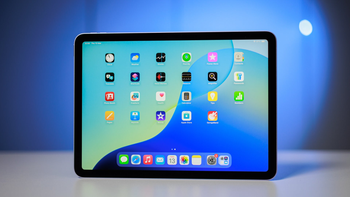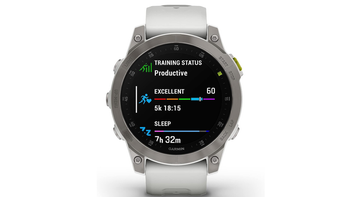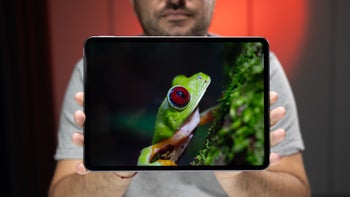Motorola Moto X hands-on

Introduction:
Hello Moto! We were just talking about you just last week, when Verizon introduced the world to its latest set of Motorola DROID branded smartphones. This time though, we’re getting a look at something that seems to have far more reach than its DROID siblings. In a very quiet affair in New York City, Motorola officially outed its next big thing – the Moto X. Rather than having that upscale announcement that we’re typically accustomed to experiencing with flagship devices, this one actually was more laid back, as Motorola took the time to meticulously go into detail regarding the key selling points of its upcoming smartphone.
Naturally, the Moto X is heading into the thick of battle, as many flagship smartphones from various companies are vying for supremacy in the landscape. And after being introduced to the new line of Motorola DROIDs, it would seem as though some of the Moto X’s thunder would be lessened. Well, that’s certainly not the case, seeing that the handset is going to be made available through all four major wireless carriers in the US, plus regional carrier US Cellular, when it launches in the comings weeks.
Display:
Meh, it’s no monster on paper, but when you look at the Moto X’s 4.7-inch AMOLED 720p display, it still has that invisible power to reel us in with its iridescent glow. With 720p resolution and all, it’s obviously lagging behind the competition, but we really can’t count it out. For beginners, we’re just amazed that they’re able to keep the relative size of the handset extremely confined – so that it doesn’t feel like you’re holding to a phone with a 4.7-inch display, but instead, something smaller. Details are naturally okay, which is something expected from its size and resolution. Colors on the other hand, continue to mesmerize us with its prominent glow and saturated tones, which are the hallmark qualities of AMOLED displays.
Just like the DROIDs, it features an Active Display that delivers relevant notifications to a small section on the display – thus, lessening its power consumption. In order to view them, you can either nudge the handset when it’s asleep, or simply flip the handset from its back to its front. After all is said and done, it’s great for not being obtrusive. Overall, the display itself isn’t astounding, especially when pitted against some of the monster sized 1080p displays out there, but it’s still one of the handset’s visual appeals from a first glance.
Design:
Whereas the new DROIDs are cutting edge and aggressive with their designs, Motorola opts for a more humble and laid back approach with the Moto X. Above all, it’s just the size of the handset that really catches our attention. It’s a phone with a 4.7-inch display, but it feels as though we’re holding something with a 4” or 4.3” display. Adding to its compact size, the curved nature of its rear casing enables it to feel ergonomically correct when held in the hand – so it simply comes off as natural. In terms of materials, Motorola says that it’s comprised out of this composite material, which is plastic in nature, but there’s this nice rubbery finish to it. Throw in a specific pattern design, everything comes together quite well.
Taking a quick tour around the device, all the usual suspects are all there. On its right edge, we have the dedicated power button and volume control, which are thin in size, but still very distinct to the touch and responsive. Along the top edge, we have the 3.5mm headset jack and noise cancelling microphone – while the bottom hosts its microUSB port and standard mic. Oh yeah, this utilizes a nanoSIM slot, which is placed on its left edge and is accessible with the included SIM removal tool.
We don’t have the customary Android capacitive buttons beneath the display, since they’re incorporated into the interface. Rounding things out on its façade, we have its earpiece, light/proximity sensors, and front-facing 2-megapixel camera. Flip it over to the rear, its 10-megapixel Clear Pixel camera with LED flash are all flush with the surrounding surface. Unfortunately, this doesn’t feature expandable memory, which means that you’ll need to be a bit more conscious about using up its 16GB of storage (there will be a 32GB option as well).
Going with a different approach, Motorola is going for something new when it comes to the design process of the Moto X. Of course, you can pick up the handset in its usual black and white color options, but they’re adding something entirely new to the mix – Moto Maker. What is it? Well, it’s their online portal where prospective buyers can customize their handsets. Impressively, there’s a lot that you can modify – such as the rear casing’s color, pattern, color accents, startup greeting, and physical etching. So yeah, it’s pretty wonderful that there’s this fine level of detail when it comes to the creation process. However, it should be noted that AT&T will be the exclusive carrier in the US to take advantage of Moto Maker. Furthermore, you can even purchase other accessories, such as cases and headphones, which would match the color scheme of your phone. Frankly, the unified experience is very different from what we’re traditionally exposed to, but we really hope that all carriers will get in with this new process too.
Interface and Functionality:
After perusing around the software, it’s clearly evident that it shares many of the software enhancements that we already saw with the new line of DROIDs – we’ll expand upon them momentarily. However, it’s running a stock Android 4.2.2 Jelly Bean experience, so if you’ve played with Nexus or Google Play Edition devices recently, this shouldn’t be too much of a surprise. You won’t find those interactive clock widgets that the new DROIDs boast. As for the rest, everything from its presentation to its base functionality, is pretty much expected. Now onward to some if its notable features.
Needless to say, those aren’t entirely new features, seeing that Verizon’s new Motorola DROID line with boast them as well. In addition, the hardware underneath the Moto X is also familiar. Specifically, it’s packing along Motorola’s own home brewed X8 Mobile Computing System, which is essentially a dual-core 1.7GHz Qualcomm Snapdragon S4 Pro processor, with natural language and contextual computing processors in tow. Again, we’re happy to see that things are running very snappy with even complex functions.
On-screen Keyboard:
Taking into consideration its spacious screen size and responsiveness, it doesn’t shock us that the Moto X is great for typing up messages. Actually, we typed out a few messages with few mistakes along the way in our short time with it.
Internet and Connectivity:
Donning 4G LTE connectivity, it’s able to speedily load even the most complex of pages with snappiness. Throw in the fact that its performance is also top notch, which produces instant page rendering and buttery smooth navigational controls, we really can complain about the awesome experience.
From what we’re told, the Moto X is going to be available in both GSM and CDMA flavors in the US. With the GSM model, it’ll sport HSPA+ 42 Mbps and 4G LTE connectivity – whereas the CDMA models will naturally feature EVDO Rev A connection on top of LTE. As for the rest of its goodies, it’s nothing out of the ordinary – such as aGPS, NFC, Bluetooth 4.0, 802.11 a/b/g/n Wi-Fi, and Miracast Wireless Display. With the latter, your television set will need to be Miracast-enabled, obviously, to get streaming functionality from the Moto X.
Camera:
Armed with a 10-megapixel Clear Pixel camera with LED flash, it’s the same exact one featured with the new DROIDs – surprise, surprise. Essentially, it employs a RGBC sensor, with the C standing for Clear, which enables it to actually collect up to 75% more light than your normal RGB Bayer sensor. Knowing that it’s also packing an f2.4 aperture lens too, you know that it’s also going to be a serious contender with low lighting shots. In fact, Motorola showed us some sample photos taken with the handset. Even when there’s fast movement in the scenery, such as a little kid running or water coming out from a fountain, the camera is able to capture everything with a high level of clarity and crispness. Who knows how it’ll turn out with our real-world scenarios, but we’re curious to see the results ourselves nonetheless.
As we’ve detailed already, the handset’s Quick Capture Camera feature enables us to quickly get into the camera app. Looking around the UI, they’ve changed the look and style just enough to make it seem like we’re actually using a standard camera, seeing that a rotatable menu is accessible by swiping to the right – offering us access to different settings and options.
Expectations:
The rumors pointed to a $300 outright cost for the Moto X, but that’s not the case with this announcement. Rather, it’s going to be available for $200 with a 2-year contract – with no word regarding outright pricing or its future Google Play Edition version. When we look at the hardware underneath the handset, it won’t blow many people away, but it really doesn’t have to. For Motorola, the customized experience in designing the handset is enough to make it an appealing option for those who want to be different. It’s comprehensive, which is nice.
However, we feel as though that the announcement of it coming to all the major wireless carriers in the US is the best news of them all. Why is that? Well, Verizon has been the only carrier to get the brunt of Motorola’s love, which continues to be the case with the new DROID line. As for the rest, like Sprint, AT&T, T-Mobile, and US Cellular, it’s been a long, long time since they’ve seen anything noteworthy from the phone maker. Will it have enough to stand equally with the greats out there? Time will surely tell.
Hello Moto! We were just talking about you just last week, when Verizon introduced the world to its latest set of Motorola DROID branded smartphones. This time though, we’re getting a look at something that seems to have far more reach than its DROID siblings. In a very quiet affair in New York City, Motorola officially outed its next big thing – the Moto X. Rather than having that upscale announcement that we’re typically accustomed to experiencing with flagship devices, this one actually was more laid back, as Motorola took the time to meticulously go into detail regarding the key selling points of its upcoming smartphone.
The hardware might not be its strongest aspect, but rather, it seems as though Motorola decided to hone in on the experience and assembly process. To tell you the truth, though, it shares many of the software experiences we’ve already seen with the new DROIDs, but the creation and assembly process attached to the Moto X is entirely alien – not only to us, but in the industry as a whole. Let’s see what the talk is all about!
Display:
Meh, it’s no monster on paper, but when you look at the Moto X’s 4.7-inch AMOLED 720p display, it still has that invisible power to reel us in with its iridescent glow. With 720p resolution and all, it’s obviously lagging behind the competition, but we really can’t count it out. For beginners, we’re just amazed that they’re able to keep the relative size of the handset extremely confined – so that it doesn’t feel like you’re holding to a phone with a 4.7-inch display, but instead, something smaller. Details are naturally okay, which is something expected from its size and resolution. Colors on the other hand, continue to mesmerize us with its prominent glow and saturated tones, which are the hallmark qualities of AMOLED displays.
Design:
Whereas the new DROIDs are cutting edge and aggressive with their designs, Motorola opts for a more humble and laid back approach with the Moto X. Above all, it’s just the size of the handset that really catches our attention. It’s a phone with a 4.7-inch display, but it feels as though we’re holding something with a 4” or 4.3” display. Adding to its compact size, the curved nature of its rear casing enables it to feel ergonomically correct when held in the hand – so it simply comes off as natural. In terms of materials, Motorola says that it’s comprised out of this composite material, which is plastic in nature, but there’s this nice rubbery finish to it. Throw in a specific pattern design, everything comes together quite well.
Taking a quick tour around the device, all the usual suspects are all there. On its right edge, we have the dedicated power button and volume control, which are thin in size, but still very distinct to the touch and responsive. Along the top edge, we have the 3.5mm headset jack and noise cancelling microphone – while the bottom hosts its microUSB port and standard mic. Oh yeah, this utilizes a nanoSIM slot, which is placed on its left edge and is accessible with the included SIM removal tool.
We don’t have the customary Android capacitive buttons beneath the display, since they’re incorporated into the interface. Rounding things out on its façade, we have its earpiece, light/proximity sensors, and front-facing 2-megapixel camera. Flip it over to the rear, its 10-megapixel Clear Pixel camera with LED flash are all flush with the surrounding surface. Unfortunately, this doesn’t feature expandable memory, which means that you’ll need to be a bit more conscious about using up its 16GB of storage (there will be a 32GB option as well).
Going with a different approach, Motorola is going for something new when it comes to the design process of the Moto X. Of course, you can pick up the handset in its usual black and white color options, but they’re adding something entirely new to the mix – Moto Maker. What is it? Well, it’s their online portal where prospective buyers can customize their handsets. Impressively, there’s a lot that you can modify – such as the rear casing’s color, pattern, color accents, startup greeting, and physical etching. So yeah, it’s pretty wonderful that there’s this fine level of detail when it comes to the creation process. However, it should be noted that AT&T will be the exclusive carrier in the US to take advantage of Moto Maker. Furthermore, you can even purchase other accessories, such as cases and headphones, which would match the color scheme of your phone. Frankly, the unified experience is very different from what we’re traditionally exposed to, but we really hope that all carriers will get in with this new process too.
The hands-on continues on the following pages
Interface and Functionality:
After perusing around the software, it’s clearly evident that it shares many of the software enhancements that we already saw with the new line of DROIDs – we’ll expand upon them momentarily. However, it’s running a stock Android 4.2.2 Jelly Bean experience, so if you’ve played with Nexus or Google Play Edition devices recently, this shouldn’t be too much of a surprise. You won’t find those interactive clock widgets that the new DROIDs boast. As for the rest, everything from its presentation to its base functionality, is pretty much expected. Now onward to some if its notable features.
Touchless Control: In order to interact with the Moto X, Touchless Control allows nothing more than the sound of our voice saying “Okay Google Now” to execute some basic functions. Even when the handset is in sleep mode, it’s actively listening for that key phrase. Once it’s spoken, we can do a variety of functions – like placing phone calls, receive directions to a destination, and much more. Yeah, it’s wonderful when it comes to giving us that hands-free experience, but there are still some things that require us to physically interact with the device.
Quick Capture Camera: Sometimes timing makes all the difference when it comes to snapping photos, since you don’t want to miss a beat. Well, with the Moto X, we can get instant access to the camera app by simply holding the handset and give our wrist a twisting motion twice. From there, the camera UI will automatically start up in its own, even when it’s locked or asleep.
Quick Capture Camera: Sometimes timing makes all the difference when it comes to snapping photos, since you don’t want to miss a beat. Well, with the Moto X, we can get instant access to the camera app by simply holding the handset and give our wrist a twisting motion twice. From there, the camera UI will automatically start up in its own, even when it’s locked or asleep.
Needless to say, those aren’t entirely new features, seeing that Verizon’s new Motorola DROID line with boast them as well. In addition, the hardware underneath the Moto X is also familiar. Specifically, it’s packing along Motorola’s own home brewed X8 Mobile Computing System, which is essentially a dual-core 1.7GHz Qualcomm Snapdragon S4 Pro processor, with natural language and contextual computing processors in tow. Again, we’re happy to see that things are running very snappy with even complex functions.
Taking into consideration its spacious screen size and responsiveness, it doesn’t shock us that the Moto X is great for typing up messages. Actually, we typed out a few messages with few mistakes along the way in our short time with it.
Internet and Connectivity:
Donning 4G LTE connectivity, it’s able to speedily load even the most complex of pages with snappiness. Throw in the fact that its performance is also top notch, which produces instant page rendering and buttery smooth navigational controls, we really can complain about the awesome experience.
From what we’re told, the Moto X is going to be available in both GSM and CDMA flavors in the US. With the GSM model, it’ll sport HSPA+ 42 Mbps and 4G LTE connectivity – whereas the CDMA models will naturally feature EVDO Rev A connection on top of LTE. As for the rest of its goodies, it’s nothing out of the ordinary – such as aGPS, NFC, Bluetooth 4.0, 802.11 a/b/g/n Wi-Fi, and Miracast Wireless Display. With the latter, your television set will need to be Miracast-enabled, obviously, to get streaming functionality from the Moto X.
Camera:
Armed with a 10-megapixel Clear Pixel camera with LED flash, it’s the same exact one featured with the new DROIDs – surprise, surprise. Essentially, it employs a RGBC sensor, with the C standing for Clear, which enables it to actually collect up to 75% more light than your normal RGB Bayer sensor. Knowing that it’s also packing an f2.4 aperture lens too, you know that it’s also going to be a serious contender with low lighting shots. In fact, Motorola showed us some sample photos taken with the handset. Even when there’s fast movement in the scenery, such as a little kid running or water coming out from a fountain, the camera is able to capture everything with a high level of clarity and crispness. Who knows how it’ll turn out with our real-world scenarios, but we’re curious to see the results ourselves nonetheless.
Expectations:
The rumors pointed to a $300 outright cost for the Moto X, but that’s not the case with this announcement. Rather, it’s going to be available for $200 with a 2-year contract – with no word regarding outright pricing or its future Google Play Edition version. When we look at the hardware underneath the handset, it won’t blow many people away, but it really doesn’t have to. For Motorola, the customized experience in designing the handset is enough to make it an appealing option for those who want to be different. It’s comprehensive, which is nice.
However, we feel as though that the announcement of it coming to all the major wireless carriers in the US is the best news of them all. Why is that? Well, Verizon has been the only carrier to get the brunt of Motorola’s love, which continues to be the case with the new DROID line. As for the rest, like Sprint, AT&T, T-Mobile, and US Cellular, it’s been a long, long time since they’ve seen anything noteworthy from the phone maker. Will it have enough to stand equally with the greats out there? Time will surely tell.









Things that are NOT allowed: